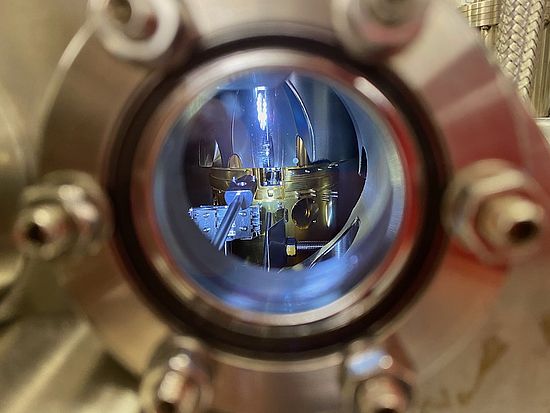The significance of boundaries in the nanosciences – seven examples
Boundaries play a vital role in the nanosciences, a world that revolves around tiny structures measuring just a few millionths of a millimeter across. In the nanosciences, the boundaries between classical disciplines also break down, and researchers from the fields of physics, chemistry, biology, medicine and materials science work together in interdisciplinary teams to test the limits of what is possible.
Beyond the realms of imagination

Classical physics reaches its limits in the world of individual atoms, molecules and tiny structures on the scale of 1 to 100 nanometers. Here, at the atomic level, it is the laws of quantum physics that describe various nanoscale phenomena and bring us right to the edge of the imaginable world.
Unlike classical physics, quantum theory often provides us only with probabilities rather than clear results. The nanoworld is also home to phenomena such as superposition, in which a particle appears to exist in multiple classical states simultaneously before measurement, and entanglement, in which the measurements for two particles can be dependent on one another. Einstein referred to the latter as “spooky action at a distance.”
Boundaries of the visible world

Objects larger than 200 nanometers can be visualized using a conventional optical microscope, whereas smaller structures only became “visible” with the development of advanced technologies such as electron and scanning probe microscopy.
Various types of these high-tech microscopes are used at the University of Basel, where microscope specialists are constantly refining the instruments for specific applications with a view to extending the boundaries of the visible world.
Electron microscope images allow researchers to determine the three-dimensional structure of individual proteins. This structure is a decisive factor in a protein’s functionality, interactions and stability. Analyses using electron microscopes also provide key contributions to materials science, since they can visualize the crystal structure of various compounds or even show faults inside or on the surface of different materials.
In other areas, researchers use scanning probe microscopes to visualize individual atoms. Using a special high-speed atomic force microscope, they can also record videos — for example, showing how a natural nanomachine works to regulate the transport of biomolecules into and out of the cell’s nucleus.
Focusing on surfaces

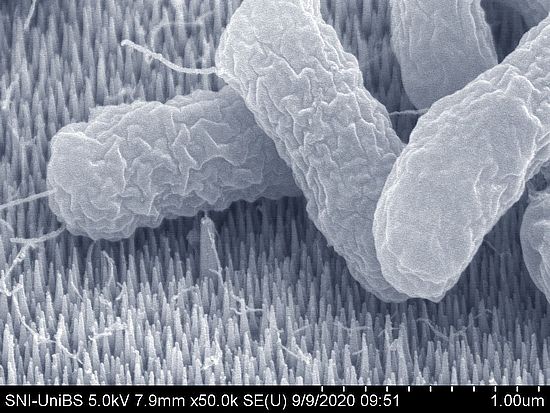
For applications in medical technology, researchers structure the surfaces of dental implants with tiny pillars to prevent the formation of bacterial biofilms while allowing surrounding tissue to grow in correctly.
Surface properties play a far greater role in the nanosciences than in the macroworld that we are familiar with, because tiny structures have enormous surface areas relative to their volume. As chemical reactions take place primarily on surfaces, nanomaterials are highly reactive and therefore suitable for use as catalysts for chemical transformations. For example, researchers from the University of Basel are exploring a new category of compounds called pyrazinacenes, which can reversibly release or accept electrons not only in liquids but also when bound to surfaces. Accordingly, these compounds are interesting candidates for chemical synthesis and electrochemistry.
At the boundaries between different materials or phases (solid, liquid or gas), nanomaterials also exhibit entirely new and unusual properties. One example are “topological insulators,” a new class of materials that behave as insulators on the inside but conduct electricity on the surface without dissipation. Researchers from the University of Basel are studying materials of this kind because they promise to pave the way for innovations in electronics and quantum information.
At the limits of measurement

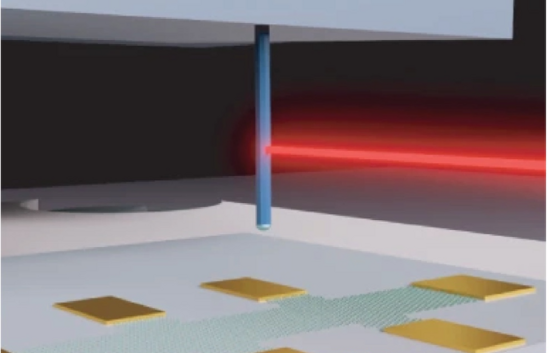
Nanowires, which are about a thousand times thinner than a human hair, can be used as highly sensitive sensors for magnetic fields.
Nanoscientists also reach the limits of possibility when they take measurements in the nanostructures they are studying. Forces that act between individual molecules cannot be measured using methods from the macroworld. Likewise, new sensors with greater sensitivity are also required to measure magnetic or electric fields and the extremely small electrical currents that occur in nanostructures.
These investigations often make use of scanning probe microscopes for their ability not only to visualize the structures but also to measure various chemical and physical parameters.
For instance, researchers from the University of Basel have analyzed the weakest bonding forces between individual atoms in nature. These “van der Waals forces” play a vital role in nature and help geckos “stick” to the ceiling, for example.
Researchers from Basel analyze tiny magnetic or electric fields using individual electrons, whose intrinsic angular momentum (spin) responds very sensitively to changes in the electric or magnetic field. It is now possible to examine the surface of two-dimensional materials and to record magnetic fields in nanoscale resolution.
Limits of manipulation and processing

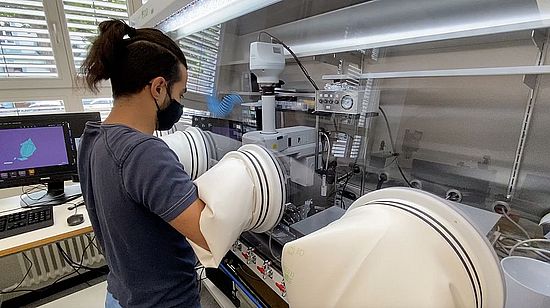
The sensitive van der Waals heterostructures are produced in a protective atmosphere inside a glove box.
Another area of research in the nanosciences revolves around new materials with special properties that don’t exist in nature. For example, scientists explore the limits of what is possible when working with two-dimensional materials that are only one atomic layer thick or when equipping surfaces with structures measuring just a few nanometers across.
Researchers produce “van der Waals heteromaterials” that consist of a few atomic layers of different compounds. These various two-dimensional layers are held together by weak van der Waals forces without chemical bonding. In this way, researchers bring together the properties of graphene — which consists of a layer of carbon atoms and is an excellent conductor of electricity — with those of boron nitride — which exhibits a high level of chemical and thermal stability.
Surface texture has a significant effect on an object’s properties, and nanofabrication can be used to equip surfaces with wide-ranging structures. For example, new lithographic techniques allow ever smaller structures to be created in all kinds of different materials.
Analysis with almost no material

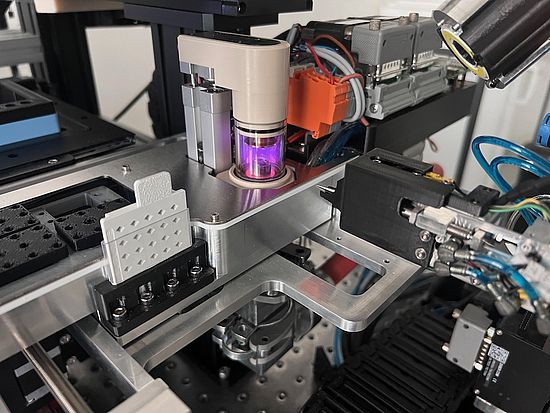
With support from the SNI, researchers at the Biozentrum developed the basis for the start-up cryoWrite, which offers efficient preparation of biological samples for cryo-electron microscopy. Just 2 nanoliters (approximately one-25,000th of the volume of a water droplet) of cell lysate is enough to analyze the proteins of individual cells.
In many cases, the problem researchers face is the limited availability of the materials they want to study. With this in mind, nanoscientists are developing methods that can make do with tiny sample quantities, such as miniature laboratories on a chip. Made up of tiny channels with a diameter of a few micrometers or nanometers, these “lab-on-a-chip” systems are used to process and analyze small quantities of material. They represent a particularly promising innovation in the field of diagnostics, where they can reliably analyze tiny samples in a short period of time.
Low-temperature limit

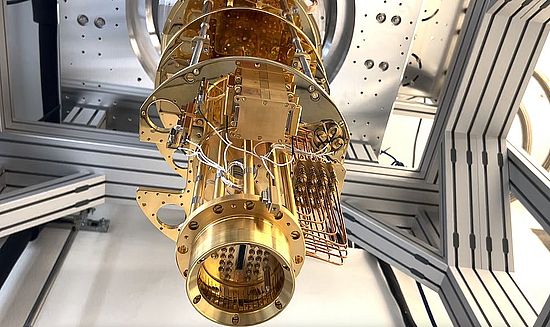
Researchers use cryostats (seen here: the exposed insert) to work near absolute zero and investigate quantum phenomena occurring at these low temperatures.
Whereas the limits of visualization, measurability and processing can be extended ever further thanks to advances in research and technology, the lowest possible temperature is an immovable boundary. Known as “absolute zero,” this limit stands at 0 kelvin (-273.15° Celsius).
Numerous investigations in the nanoworld take place near this natural limit, as there are no longer any disruptive thermal effects or Brownian molecular motion at that temperature. In addition, phenomena such as superconduction — that is, the conduction of electricity without dissipation — also occur at very low temperatures. As temperatures approach absolute zero, researchers can also investigate other quantum effects and gain a better understanding of quantum mechanical phenomena as well as contributing to the development of innovative technologies such as quantum communication and quantum computing.
Researchers from the University of Basel are working on getting closer and closer to the natural limit of absolute zero in their experiments. Physicists in Basel used magnetic fields to achieve the current low-temperature record for the coldest “refrigerator,” with a temperature of 0.0002 kelvins.

